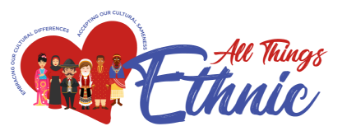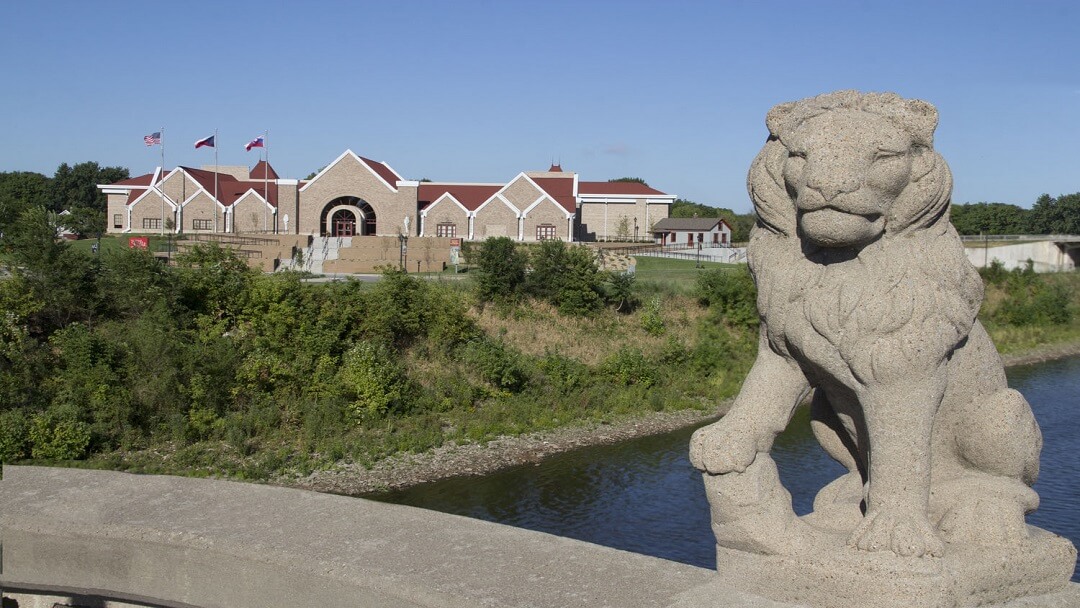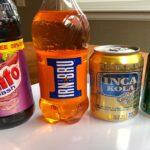Wouldn’t you love a trip to Bohemia right about now? Well, due to travel restrictions, a European trip might not be feasible at the moment. Hmm, what to do? One solution is to plan a visit to Cedar Rapids, Iowa. Almost the middle of America, Cedar Rapids holds a trove of Old World charms concentrated in the Main Street District. For example, visit the Czech Village shops or stroll through New Bohemia, otherwise known as NewBo.
Czech History in Cedar Rapids
The history of Czech immigration to Cedar Rapids is the story of three settlements. Each settlement grew out of the previous one.
First Settlement (Downtown)
The downtown area made up the first settlement. It was home to only a few Czech immigrants at the time. Nonetheless, the Czechs built a church, a school, and a social club. Companies began establishing themselves. For instance, Sinclair’s meatpacking company opened in 1871. A year later, the company relocated a little further south due to ahem, stinky smells.
Second Settlement (South of Downtown)
Sinclair’s move established reliable employment. Word soon spread, encouraging new Czech immigration. Settlers and the new incomers followed Sinclair and began to develop the “South End.” Due to the Cedar River’s proximity and the railroad, other businesses soon developed. An early “Little Bohemia” began to form.
The Czechs constructed a new school located at 925 Second Street SE. It is said to be the oldest continuously operated ethnic school in the U.S. The Czechs also rebuilt their social club. This grand new three-story structure still stands in the South End at 11th Avenue and Third Street SE.
The only remaining building of the first settlement stands at 417 Third Street SE. Once the home to Sokol Gymnasium, its basement now houses the Taboo Nightclub.
Third Settlement (Across the Cedar River)
The area directly across the Cedar River to the west was home to mostly Italian, Russian, and Lebanese immigrants. Only a few Czechs lived there. The main street was primarily an access-way to cross the bridge to factories on the east side.
After 1900, new industries opened on the west side of the river, gradually prompting more Czechs to establish residences. A new concrete bridge replaced the old iron bridge. More space on this side provided quieter neighborhoods. Also, the increased access to automobiles made the commute easier.
In the early ‘70s, the Czech Heritage Foundation proposed ways to preserve Czech heritage and encourage tourism. The “Czech Village” brainchild was born. It encompassed the entire area on the bridge’s west side, thus becoming the third settlement. Eventually, the Czech Heritage Foundation became the National Czech and Slovak Museum and Library.
Second Settlement Rebranded
Meanwhile, the second settlement (the South End) was experiencing a slow decline. Sadly, the Sinclair meatpacking house closed in 1990. Fortunately, the beginning of the 21st century brought new attention to the South End’s historical value and preservation. The result was rebranding the South End into New Bohemia or NewBo.
Main Street District
Then, disaster struck with the flood of 2008, devastating many of the buildings. However, concerned citizens and groups expressed the desire to rebuild. They pledged to preserve the area’s unique heritage. The resulting Main Street District, or The District, includes both the Czech Village and NewBo.
The District is flourishing with 43 retail shops, 37 restaurants, 12 Airbnbs, and many cultural attractions.
Shopping
See what is new at the NewBo City Market with its mission as a small business incubator and event center. Indulge in various Indian street food at Melting Bite or treat yourself to some delicious baked goodies at Shawnniecakes. Don’t forget to pick up a gift at The Artisan’s Emporium.
Eating
Many of the restaurants offer call-ahead carryout, curbside pickup, or delivery. Grab a bite and a beverage at Brewhemia, an intimate, family-owned favorite located in a historic building. Order coffee or a locally crafted wine or beer. Enjoy delicious breakfast and lunch specialties.
NCSML
Spend an afternoon exploring the National Czech & Slovak Museum & Library (NCSML). Current exhibits include Faces of Freedom and Stitching History from the Holocaust.
Also, check out NCSML’s many new virtual programs. For example, the Author Talk series provides discussions with various authors. Texas A&M Professor David Chroust teaches the Master Class Series. He focuses on Czech and Slovak historical topics. Participate in or listen to fun virtual cooking classes with Chef Tomás Slepička. Read his blog at Cooking with Family. Andrea Siebenmann teaches a delightful eight-week Slovak language class. Finally, take a look at NCSML’s online artifacts collection.
Other Museums
The CSPS Hall dedicates itself to promoting arts, music, and theater.
The African American Museum of Iowa celebrates African American heritage through many enlightening exhibits and workshops.
Less than a ten-minute drive north of The District, Brucemore will dazzle visitors. This historical monument and museum encompass 26 acres. Its centerpiece being the 1886 Victorian Queen Anne-style mansion and gardens.
You will undoubtedly find your inner bohemian with a visit to the Czech Village and NewBo in Cedar Rapids, Iowa.
Source: https://crmainstreet.org/history







